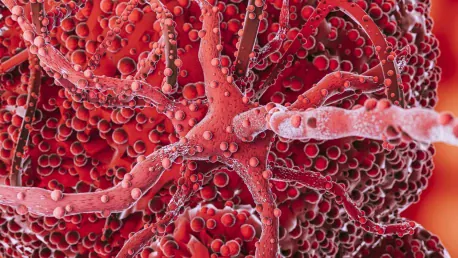The advancements in imaging biomarkers have substantially shifted the landscape of diagnosing and managing urologic cancers. By emphasizing precision diagnostics and individualized treatments, these developments have led to enhanced accuracy in detecting and monitoring cancer stages, thus significantly improving patient outcomes. As technology progresses, the integration of digital diagnostics, advanced algorithms, and comprehensive biomarker repositories paves the way for more tailored and effective urologic oncology care.
Introduction to Precision Diagnostics
In the realm of urologic oncology, precise diagnostics are fundamental to devising personalized treatment plans. Leveraging innovative technologies such as digital imaging and sophisticated algorithms has proven essential in achieving this goal. Dr. Valeria Panebianco, during her presentation at the EAU 2025 Annual Meeting, underscored the importance of aligning diagnostic tools with specific clinical questions. She highlighted how these advancements are transforming patient management by enabling more accurate and detailed assessments of urologic cancers.
The emphasis on precision diagnostics stems from the need to address the heterogeneity of urologic cancers. By integrating cutting-edge technologies, healthcare providers can offer more tailored treatments that align with the unique characteristics of each patient’s condition. This approach not only enhances treatment efficacy but also minimizes unnecessary interventions, ultimately improving the quality of care and patient outcomes. The collaboration between different diagnostic modalities and the application of advanced algorithms is steering the field towards a future where individualized treatment is the norm.
The Role of Imaging Biomarkers
Imaging biomarkers play a pivotal role in the detection, staging, grading, and monitoring of treatment responses in urologic cancers. These biomarkers provide a clear and comprehensive overview of the disease, enabling clinicians to make informed decisions about patient management. For instance, TNM staging obtained through CT, MRI, and PET scans is integral to assessing the extent of cancer spread. Additionally, measurable values such as SUVmax in PET imaging and ADC in diffusion MRI offer critical insights into tumor metabolism and cellularity, respectively.
The utility of imaging biomarkers extends beyond mere detection; they are essential for guiding treatment decisions and tracking therapeutic efficacy. Technologies like MRI, CT, and PET scans offer high-resolution images that reveal subtle changes in disease progression, thus enabling clinicians to adjust treatment strategies in a timely manner. This dynamic approach to patient management ensures that treatments remain effective while minimizing the risks associated with over-treatment or under-treatment. As imaging biomarkers continue to evolve, their role in personalized medicine becomes increasingly prominent.
Regulatory Standards and Repositories
To ensure the effective application of imaging biomarkers in clinical settings, regulatory standards and repositories are crucial. The FDA and EMA have established stringent criteria for biomarkers, including requirements for sensitivity, specificity, and predictability. These standards are essential for validating biomarkers and ensuring their reliability in clinical practice. By adhering to these criteria, healthcare providers can confidently utilize the most effective biomarkers for diagnosing and managing urologic cancers.
Efforts to develop digital biomarker repositories aim to integrate validated biomarkers from multiple imaging modalities. These repositories serve as centralized databases that enhance diagnostic precision by providing comprehensive information about various biomarkers. The integration of digital diagnostics with biomarker repositories allows for more accurate and consistent assessments, ultimately improving patient outcomes. As these repositories expand, they provide clinicians with invaluable resources for making informed decisions about patient care.
Prostate Cancer Imaging Biomarkers
Prostate cancer management has greatly benefited from advances in imaging biomarkers. MRI scoring systems such as PI-RADS have become indispensable for predicting the likelihood of significant prostate cancer. By incorporating T2-weighted imaging, diffusion-weighted imaging, and dynamic contrast enhancement, PI-RADS provides an in-depth analysis that aids in treatment planning. These scoring systems offer clinicians a standardized approach to evaluate prostate cancer, ensuring consistency and accuracy in diagnosis and management.
Innovations like PI-QUAL, PRECISSE, and PI-RR have further enhanced the capabilities of MRI in prostate cancer evaluation. PI-QUAL focuses on assessing MRI quality, ensuring that imaging meets the necessary standards for accurate interpretation. The PRECISSE score is utilized for tracking active surveillance, providing a reliable means of monitoring patients over time. Meanwhile, PI-RR evaluates cancer recurrence post-treatment, guiding clinicians in adapting treatment plans based on the patient’s response. These advancements demonstrate the versatility and effectiveness of MRI in managing prostate cancer.
Bladder Cancer Imaging Advancements
Bladder cancer diagnostics have also seen significant advancements due to imaging biomarkers. The VI-RADS scoring system, for example, is pivotal for assessing muscle invasion depth in bladder cancer. This system significantly influences pre- and post-TURBT (transurethral resection of bladder tumor) treatment decisions, providing clinicians with standardized assessments of tumor invasion. By offering a clear and consistent method for evaluating muscle invasion, VI-RADS aids in determining the most appropriate treatment strategies for bladder cancer patients.
The nac-VI-RADS scoring system further enriches bladder cancer management by allowing for reliable evaluation of radiological responses to neoadjuvant therapy. This system provides accurate assessments of how effectively the therapy has targeted the cancer, guiding subsequent clinical management. By integrating such precise evaluation methods, clinicians can make more informed decisions regarding treatment escalation or modification based on the patient’s response to initial therapies. This ensures a dynamic and adaptive approach to managing bladder cancer, enhancing treatment outcomes and patient care.
Computational Pathways and AI Integration
The integration of computational pathways and artificial intelligence (AI) has brought about a new era in urologic oncology diagnostics. Network analysis and AI are instrumental in refining diagnostic accuracies and improving patient stratification processes. By combining diverse data sources, these technologies enhance early disease detection and provide a comprehensive understanding of cancer pathology. This integration enables more precise diagnostics, offering clinicians detailed insights that inform personalized treatment plans.
For prostate cancer, computational pathways integrate clinical data with miRNA expression profiles and MRI biomarkers, refining risk stratification and predicting tumor aggressiveness. Dr. Panebianco’s research highlighted the potential of these integrated pathways in enhancing early detection and reducing unnecessary biopsies. By utilizing network analysis and AI, clinicians can identify specific biomarkers that correlate with significant cancer types, thus enabling more accurate and targeted interventions. This advanced approach to diagnostics exemplifies the transformative impact of computational technologies in improving patient care.
The Future of Diagnostic Models
The advancements in imaging biomarkers have greatly transformed the way urologic cancers are diagnosed and managed. By focusing on precision diagnostics and personalized treatments, these innovations have led to more accurate detection and monitoring of cancer stages, significantly improving patient outcomes. As technology evolves, there is a growing integration of digital diagnostics, advanced algorithms, and extensive biomarker databases, which are crucial for providing more tailored and effective care in urologic oncology.
Precision diagnostics play a pivotal role in identifying the specific characteristics of a patient’s cancer, allowing healthcare providers to design treatment plans that are uniquely suited to the individual. This approach not only enhances the accuracy of diagnosis but also increases the effectiveness of treatments, ultimately leading to better survival rates and quality of life for patients.
Moreover, the adoption of advanced algorithms and comprehensive biomarker repositories helps in collating vast amounts of data that can be analyzed to discern patterns and predict outcomes. This data-driven approach supports clinicians in making informed decisions, thereby optimizing patient care.
In conclusion, the fusion of cutting-edge technology with precision medicine is revolutionizing urologic oncology. The continued progress in imaging biomarkers, coupled with the advancements in digital diagnostics and data analytics, promises a future where cancer care is increasingly personalized and effective.









